One of the sunny ABC islands in the southern Caribbean, Bonaire is well known for its abundant reefs, attracting divers and snorkelers. At the same time, Bonaire’s beaches invite sunning, and many reward swimmers with their calm turquoise waters.
On other beaches, stroll pink or black-laced sands, experience waves crashing against rocky shores, and learn to spread your wings, Caribbean-style, by taking windsurfing or kiteboarding lessons.
Enjoy these 12 best beaches in Bonaire.
No Name Beach, Klein Bonaire
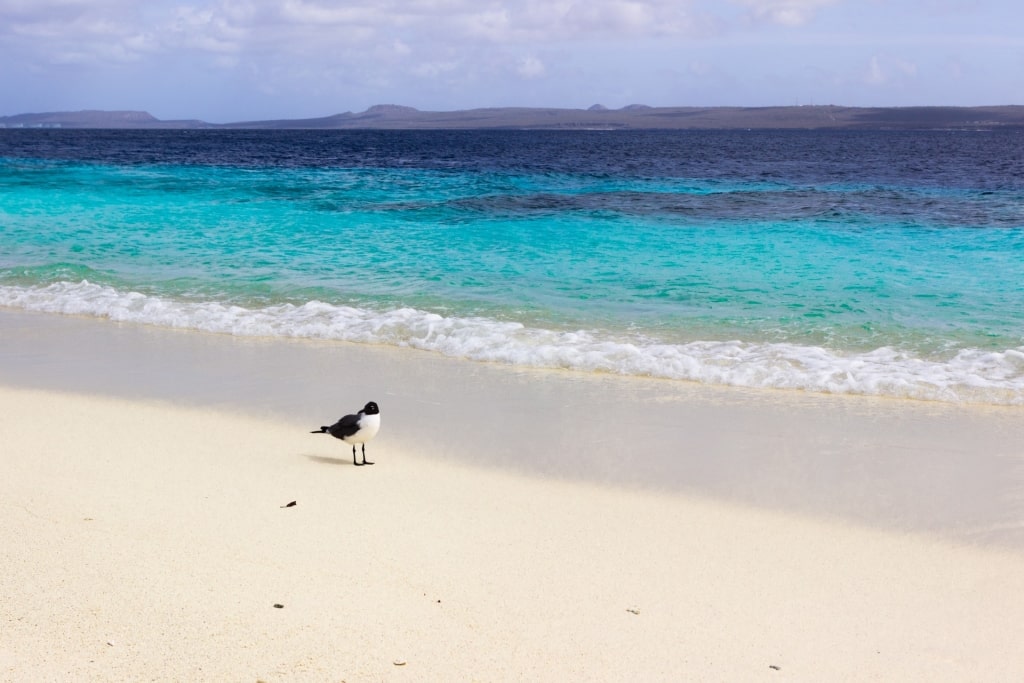
No Name Beach, Klein Bonaire
No Name Beach, a dazzling swath of white sand on Klein Bonaire (Little Bonaire), rates as one of the best beaches in Bonaire. You reach No Name, an undeveloped island, via a breezy 15-minute boat ride from the mainland.
Although people sun and picnic on the 300-yard stretch of white sand, many come to snorkel the bountiful reef that lies a few feet from the shore. No Name especially appeals to novice snorkelers who don’t want to swim too far out.
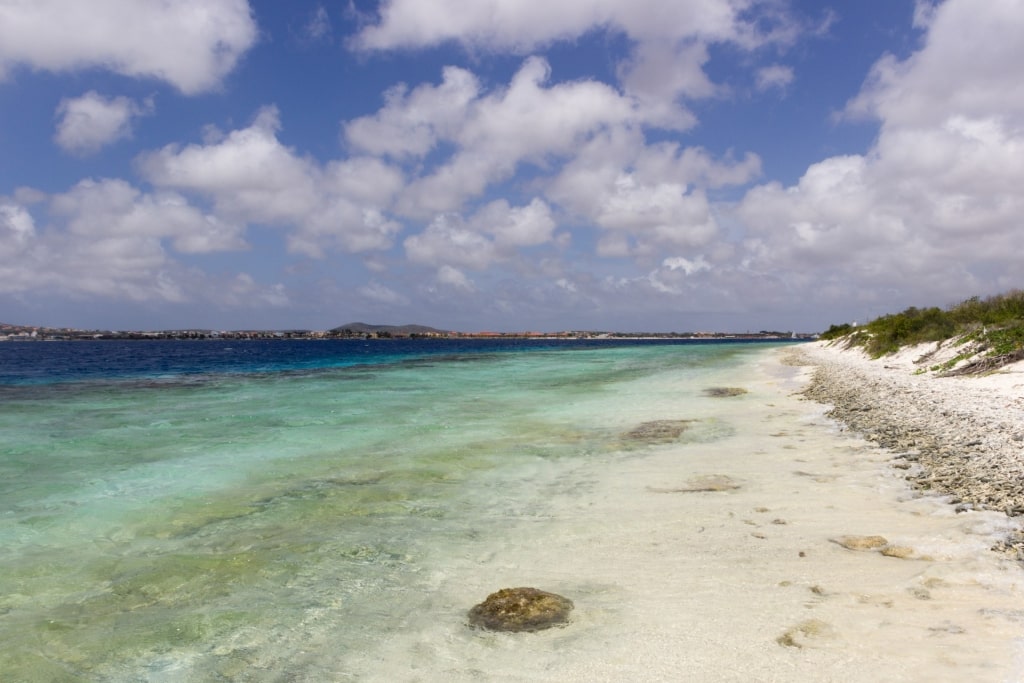
No Name Beach, Klein Bonaire
You see coral, schools of tropical fish, and eels that inhabit the island’s rock ledge. Because No Name lacks services, except for two shelters to shield you from the sun, bring plenty of water and snacks.
Read: Best Places to Go Snorkeling in the World
Pink Beach
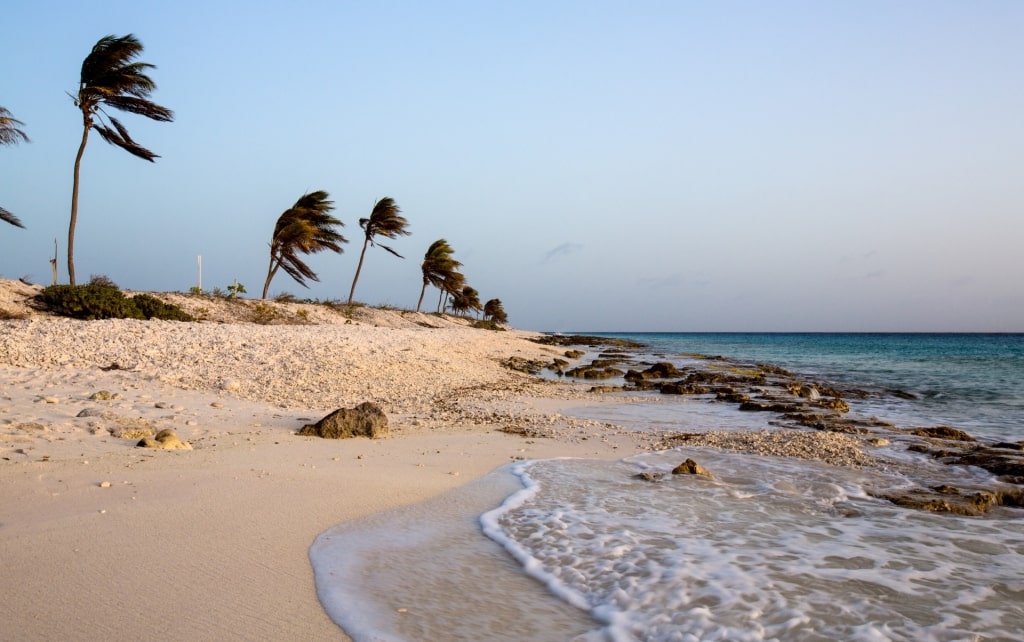
Pink Beach
Pink Beach, one of the Caribbean’s few pink sand beaches, gets its color from the crushed shells of foraminifera, microscopic pink sea creatures.
It’s best to stroll the long, narrow strip of sand rather and content yourself with paddling rather than swim since the currents can be rough at this beach, which is situated near Flamingo Airport.
As Pink Sand Beach has no services, bring water and snacks. The few scattered palm trees offer more decoration than meaningful shade but this is a beautiful place to stroll.
Sorobon Beach
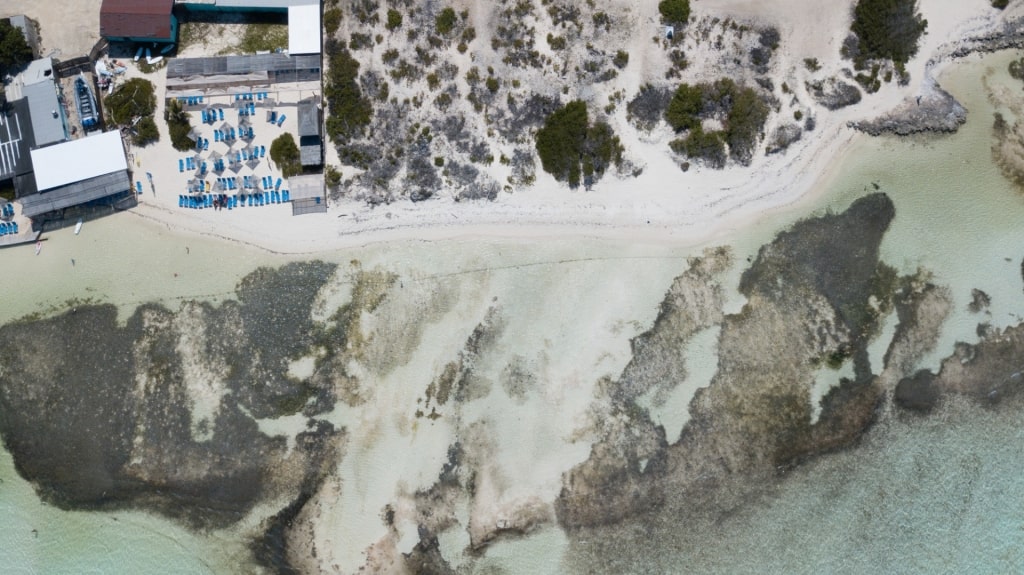
Sorobon Beach
Sorobon Beach, one of the best beaches in Bonaire, is a long stretch of soft sand on Lac Bay on Bonaire’s southeast coast, with fishing boats bobbing on the water near the pier. A great place for sunbathing and swimming, Sorobon Beach is also a top spot to learn windsurfing.
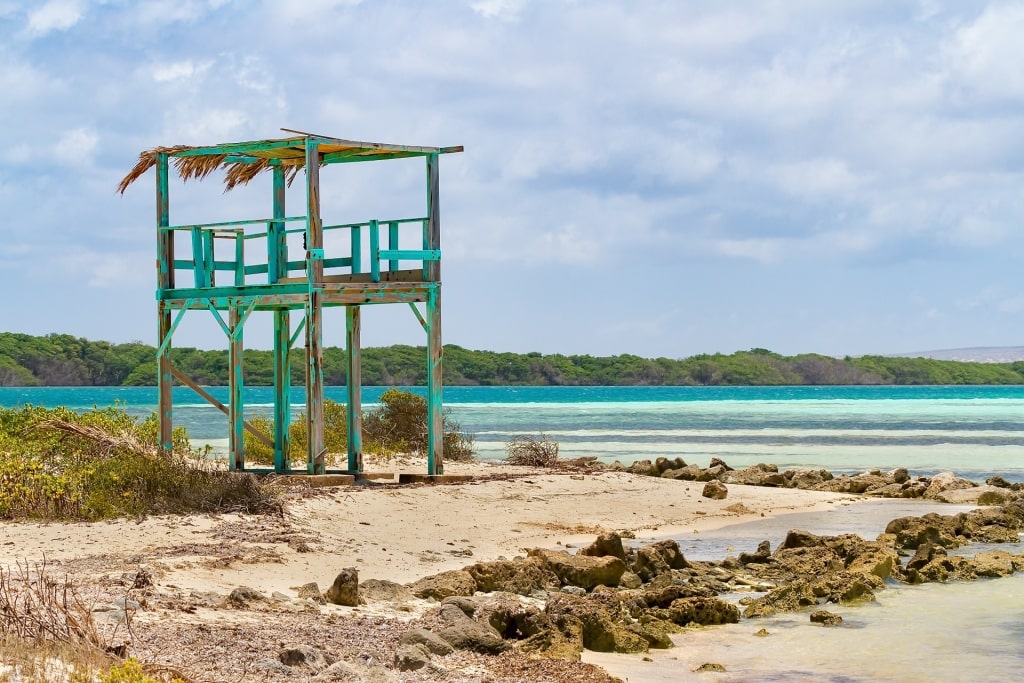
Sorobon Beach
Since Lac Bay’s calm water averages between just two and four feet in depth for a long way out, you can easily stand up if—when—you fall off your board.
Since the near-constant breezes blow toward shore, new windsurfers needn’t worry about losing control and gliding to the other side of the bay.
Here, you’ll find both beginning and intermediate windsurfing lessons. For lunch, try the salads and sandwiches at the waterfront Hangout Beach Bar.
1,000 Steps
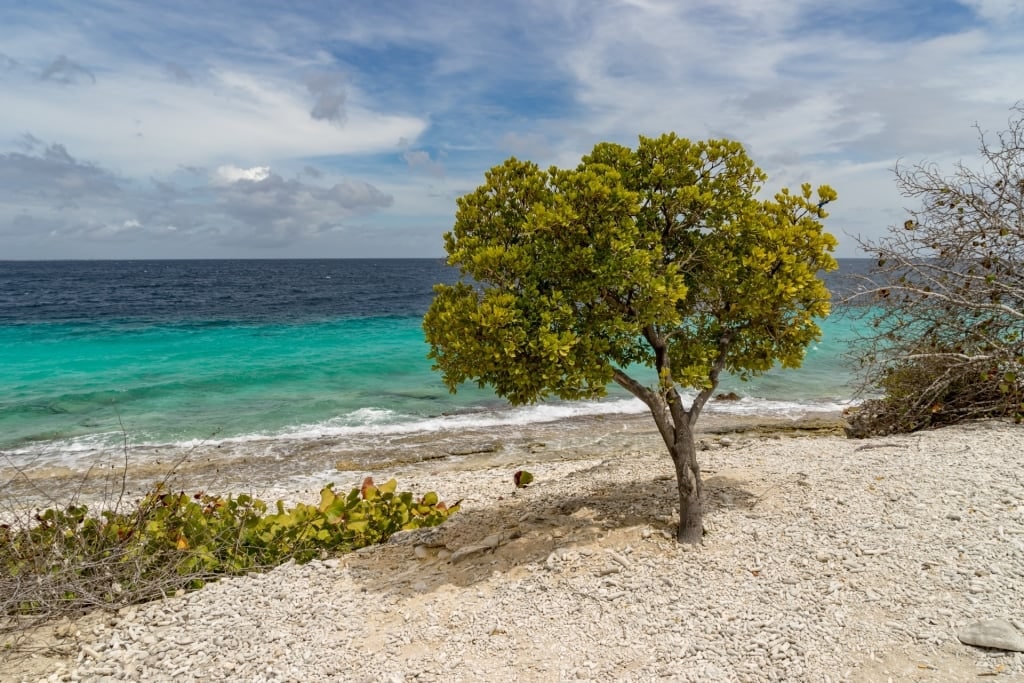
1,000 Steps
A sliver of sand strewn with chunks of coral and backed by dense vegetation on Bonaire’s west coast, 1,000 Steps takes its name from the long stairway of 67 limestone steps, mercifully not 1,000, down to the beach.
From 1,000 Steps, one of Bonaire’s best beaches for snorkeling, you can swim above an elkhorn coral forest inhabited by parrotfish, blue tang, and surgeonfish. Nearby, look for star coral, hawksbill turtles, filefish, and manta rays.
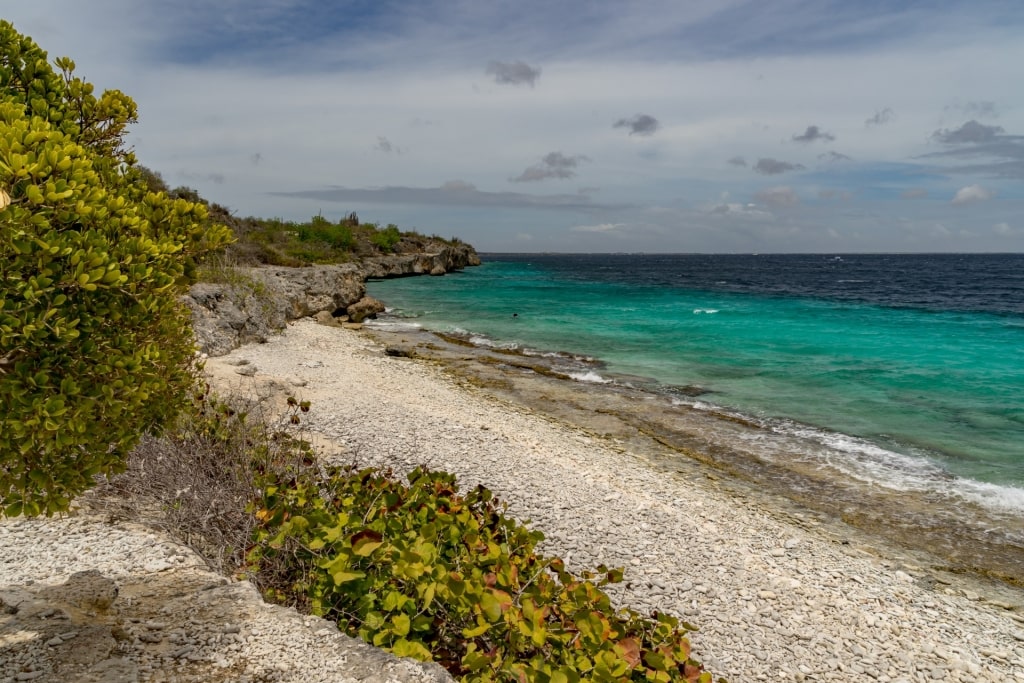
1,000 Steps
Climbing back up the stairs, you realize the aptness of the name as it may feel like 1,000 steps. At the top, while you catch your breath, take the perfect shot of the turquoise and deep blue water edged by white sand.
It’s wise to wear water shoes to protect your feet on the steps and the coral on this Caribbean beach. Since 1,000 Steps lacks facilities, bring plenty of water.
Read: Best Places to Go Diving in Bonaire
Boka Slagbaai
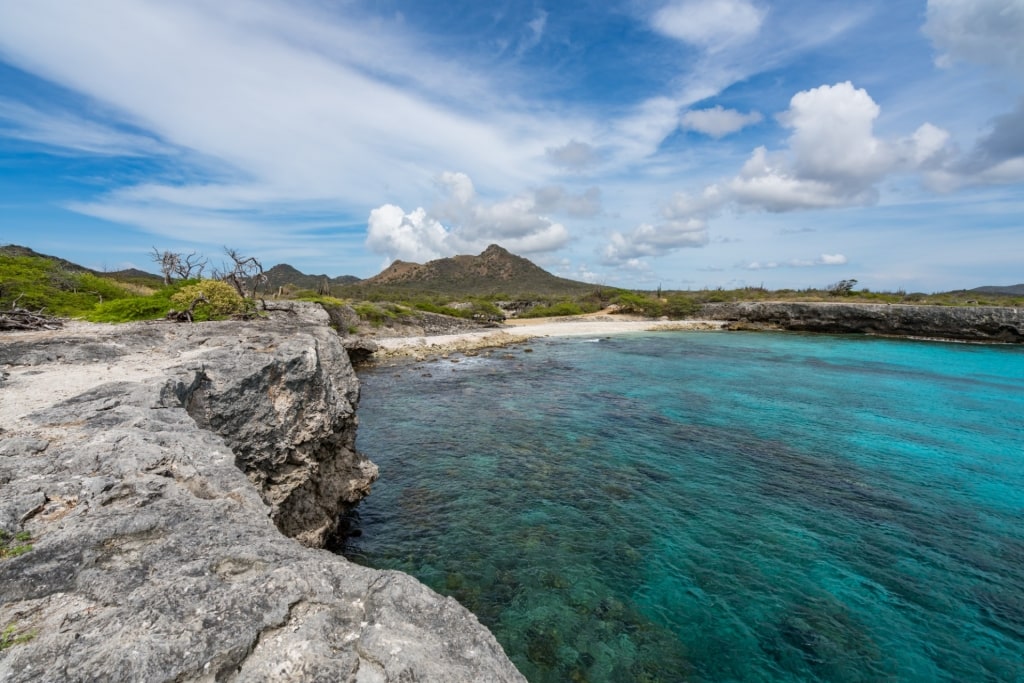
Boka Slagbaai
Allow time when visiting Washington Slagbaai National Park to swim at Boka Slagbaai. The park sprawls across 14,000 acres of land on Bonaire’s northwest.
A drive along the park’s dirt roads (four-wheel vehicle or a tour recommended) leads you into a stark desert landscape of cacti and scrub brush, freshwater springs that attract birds, salt pans where flamingos flock, and to fringing beaches.
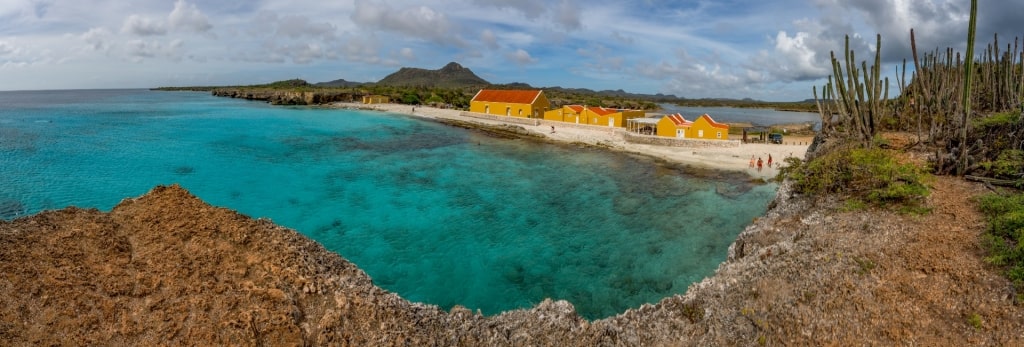
Boka Slagbaai
Cool off at Boka Slagbaai, or “slaughter bay”. During the plantation era, more than 100 years ago, workers killed and salted goats in the bay before exporting them to Curacao and other places. Some of the remaining bright yellow buildings left over from that era contain picnic tables and bathrooms.
A mix of sand and rocks, Boka Slagbaai draws snorkelers. Just offshore, swim over coral formations and with brightly colored fish and rays. Be sure to look for the flamboyance of flamingos (the collective name for the bright pink birds) at the nearby salt pan, Salina Slagbaai.
Boka Kokolishi
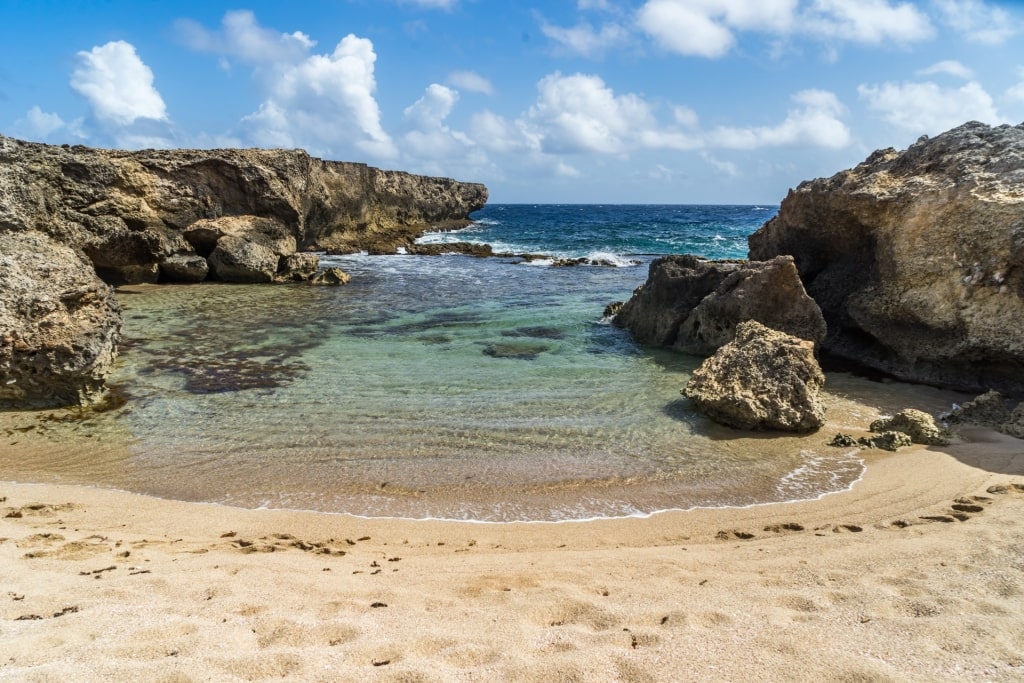
Boka Kokolishi
Situated on the northeast coast of Washington Slagbaai National Park, Boka Kokolishi, one of Bonaire’s most interesting beaches, rewards visitors with dramatic contrasts.

Boka Kokolishi
Boka Kokolishi effectively has two bays. Rock ledges and a natural breakwater shield the inner bay, creating calm waters. Beyond the volcanic rock breakwater in the outer bay, the surf pounds against the cliffs with a booming fierceness, throwing up spray.
Watch the spectacle of the powerful waves from the shore or by wading in at the first bay. Do not swim or stand near or beyond the rocks, though, as the surf can be fierce.
If you examine the limestone boulders dotting the beach, you see layers of embedded coral and shells. Kokolishi, often referred to as a black sand beach, isn’t like the volcanic blank sand beaches in Hawaii that are inky dark.
Instead what you’ll find are ribbons of dark-hued sand created by the crushed skeletons of tiny black sea snails.
Atlantis Beach
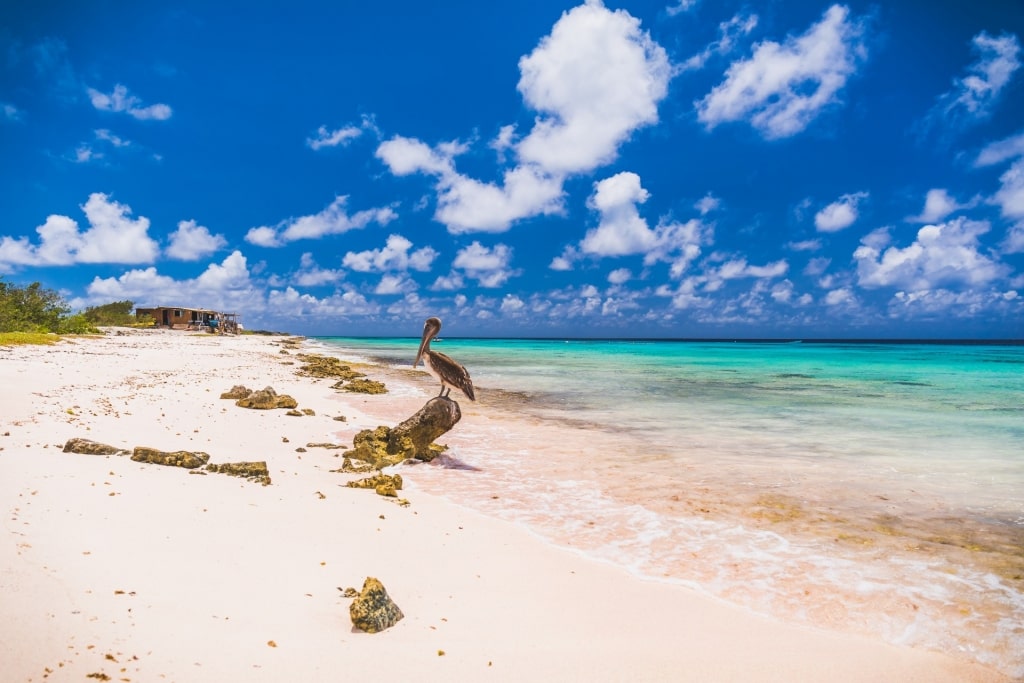
Atlantis Beach
Gliding on the surface of the sea pulled by the wind feels like flying. Because of its mix of flat water and steady winds, Atlantis Beach is one of the best beaches in Bonaire for kiteboarding, also known as kitesurfing.
Situated on the island’s southeast, Atlantis Beach has predominantly offshore winds that average 17 to 22 knots.
Although the offshore winds add a degree of difficulty for beginners, intermediate and advanced kiteboarders enjoy the opportunity to perfect their skills.
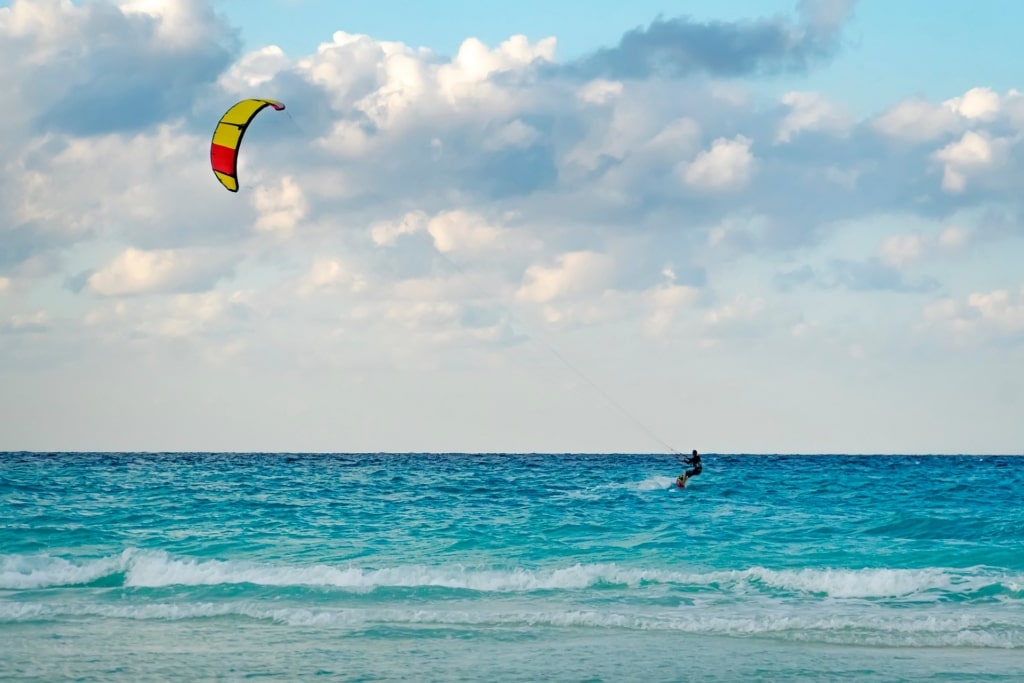
Kitesurfing
Even if you don’t kiteboard, come to watch the impressive instructors and advanced kiteboarders flip and twist on their boards. The water is calm and suitable for swimming but do be careful of the kiteboarders, who may not be able to dodge you.
In addition to the spectacle out on the water, stroll along the brilliant white sand and search for sea creatures in the tide pools here.
Playa Chikitu
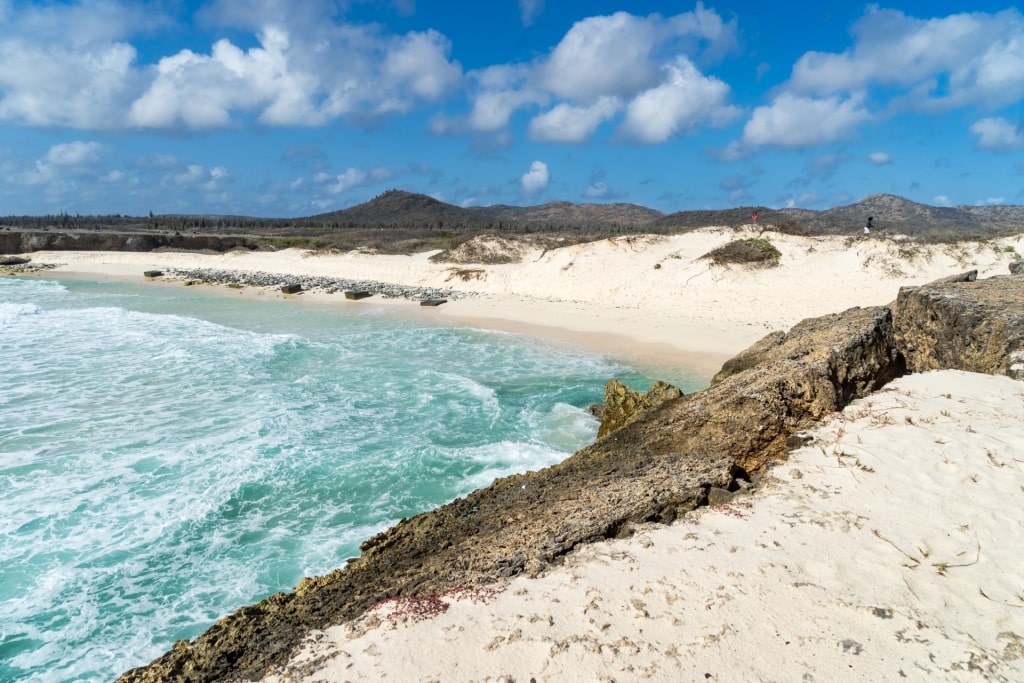
Playa Chikitu
Bonaire’s only dunes edge striking Playa Chikitu. Bookended by limestone plateaus and big rocks, the cove on Washington Slagbaai National Park’s windy east side delights with white sand and waves that crash against the rocks with a thunderous roar.
Enjoy the site, but don’t swim at Playa Chikitu because of the dangerous waves and the rip currents. In season, sea turtles nest here and you may spot one digging a nest in the sand in which to bury its eggs. If not, the turtle tracks leading up from the shoreline are a sure sign that there are nests here.
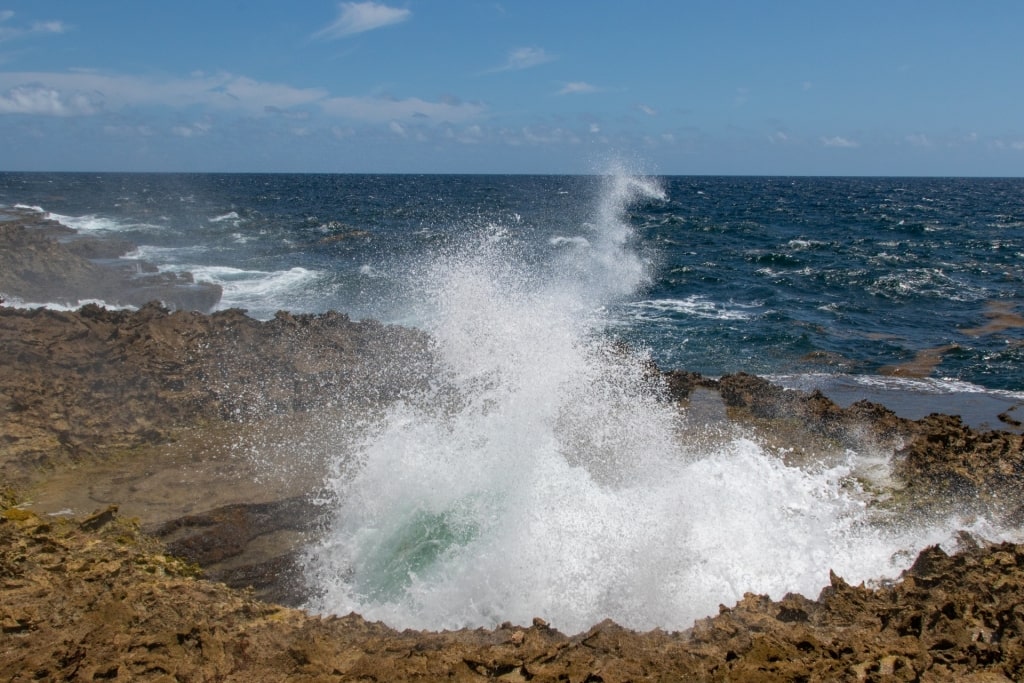
Suplado Blowhole
Nearby, Suplado Blowhole, northwest of Playa Chikitu, shoots spray high into the air. It’s an impressive sight.
Te Amo Beach
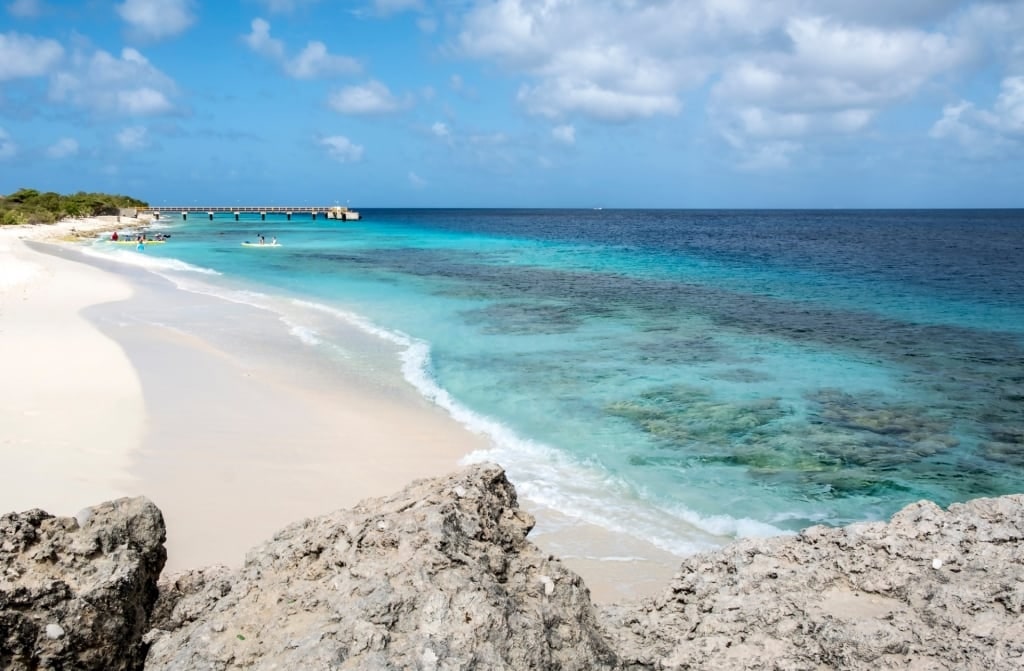
Te Amo Beach
Visiting Te Amo Beach is one of the best things to do in Bonaire. Located across the street from Bonaire’s airport, the vistas of turquoise sea and blue sky are punctuated by the sight and sound of planes taking off, to some, a mesmerizing sight.
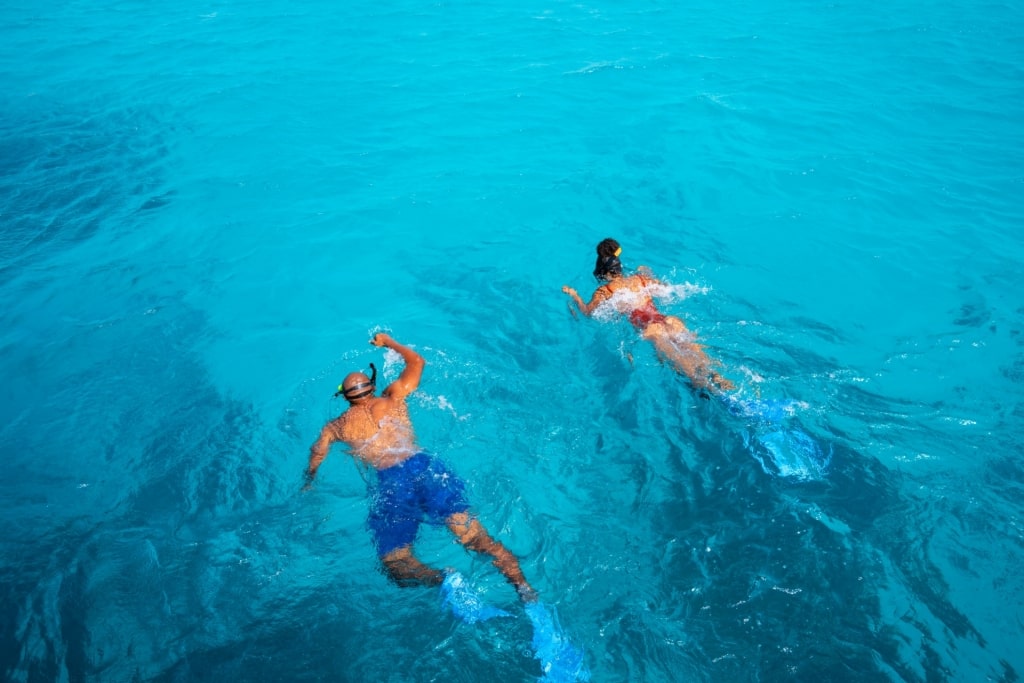
Snorkeling in Bonaire
This white sand beach features relatively calm water for swimming and snorkeling. Snorkelers can discover brain and star coral, sergeant majors, trunkfish, and other tropical fish.
Be sure to stay within the breakwater to the right of the beach that separates Te Amo Beach from the entrance to the boat harbor.
Often, the Kite City food truck is at Te Amo beach, offering wraps, burgers, quesadillas, and seafood platters for a tasty al fresco lunch.
Bachelor’s Beach
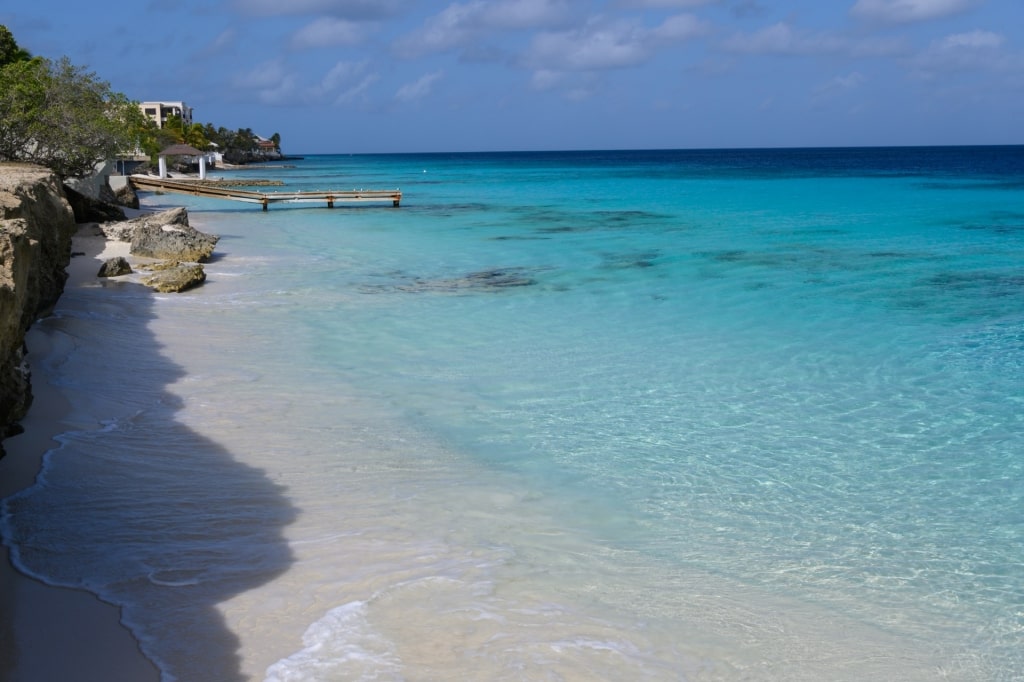
Bachelor’s Beach
Situated on Bonaire’s west, two and a half miles from Kralendijk, tiny Bachelor’s Beach is best if you want to make the most of the snorkeling here, as the sea often covers the beach itself.
At low tide, though, the beach is a small patch of white sand. A short staircase leads down from the top of the 10-foot rock wall to the sand or the water and within seconds, you can be gliding over corals and iridescent tropical fish.
For lunch or snacks, try King Kong Burger Food Truck, often located at the parking lot for Bachelor’s Beach.
White Pan Beach
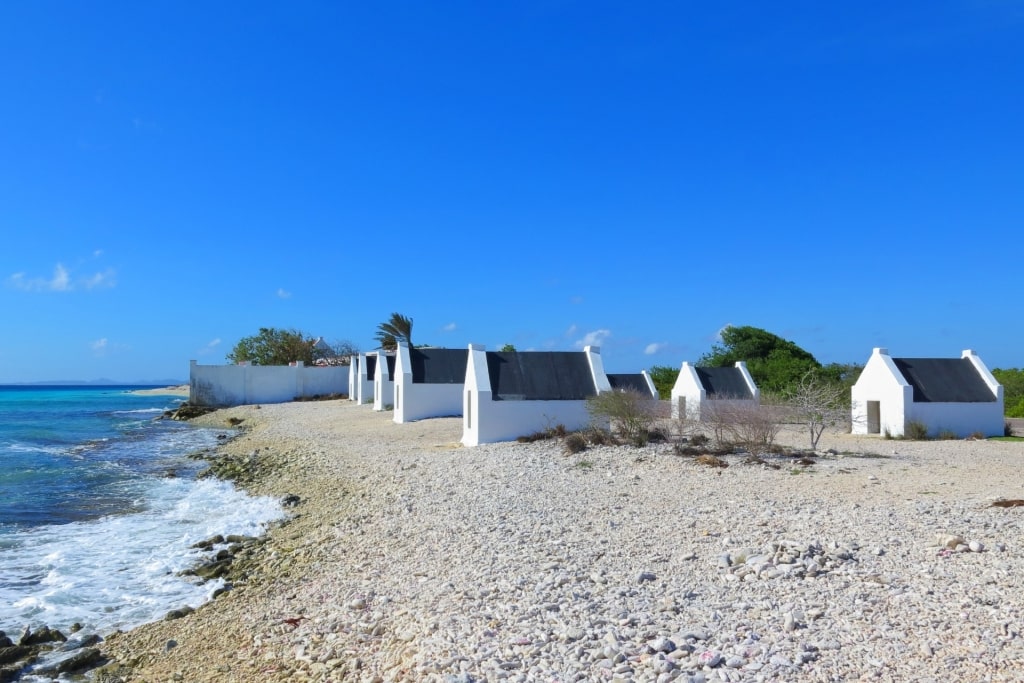
White Pan Beach
Come to White Pan Beach for the history. Caught between the turquoise sea and the pink salt pans, rows of tiny white coral stone huts line the beach.
The striking setting belies the area’s tragic past. As in many Caribbean islands, the scourge of slavery was part of Bonaire’s history.
In the 1850s, the West India Company (WIC) built the five-foot-high structures to lodge two and sometimes up to six enslaved laborers forced to work the salt pan.
After chopping the salt, the slaves carried it to small boats that would ferry it to the WIC’s ships. The intense glare of the sun reflected in the salt blinded many.
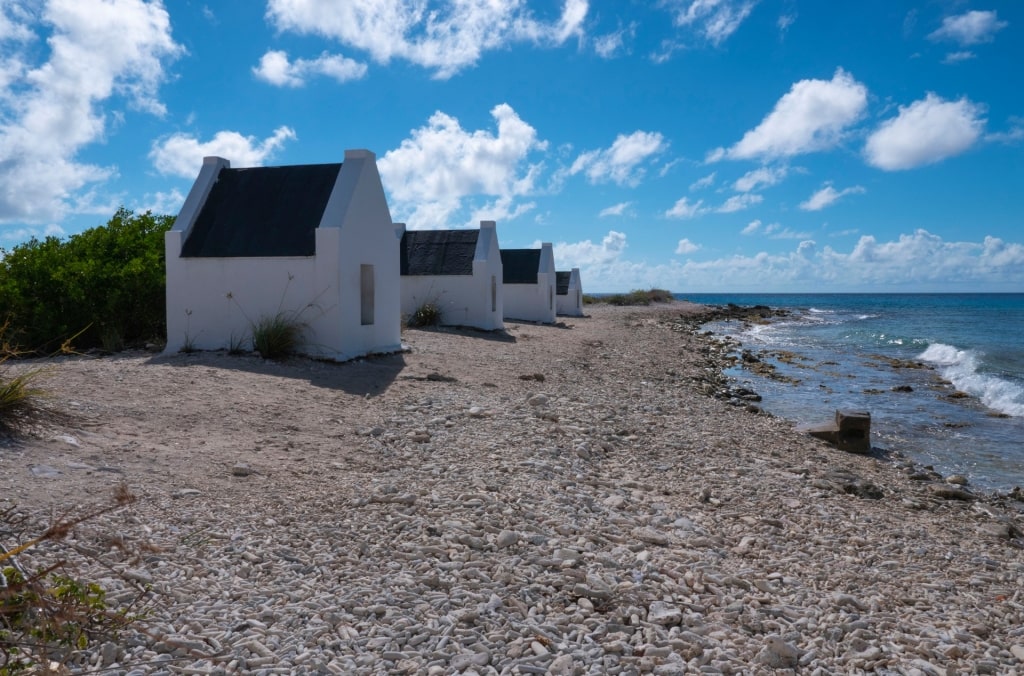
White Pan Beach
Bonaire outlawed slavery in 1863 and the surviving slaves were freed. At White Pan Beach, you can remember those who suffered and perished at the slave huts, which have been carefully preserved as part of the island’s cultural heritage.
Playa Benge
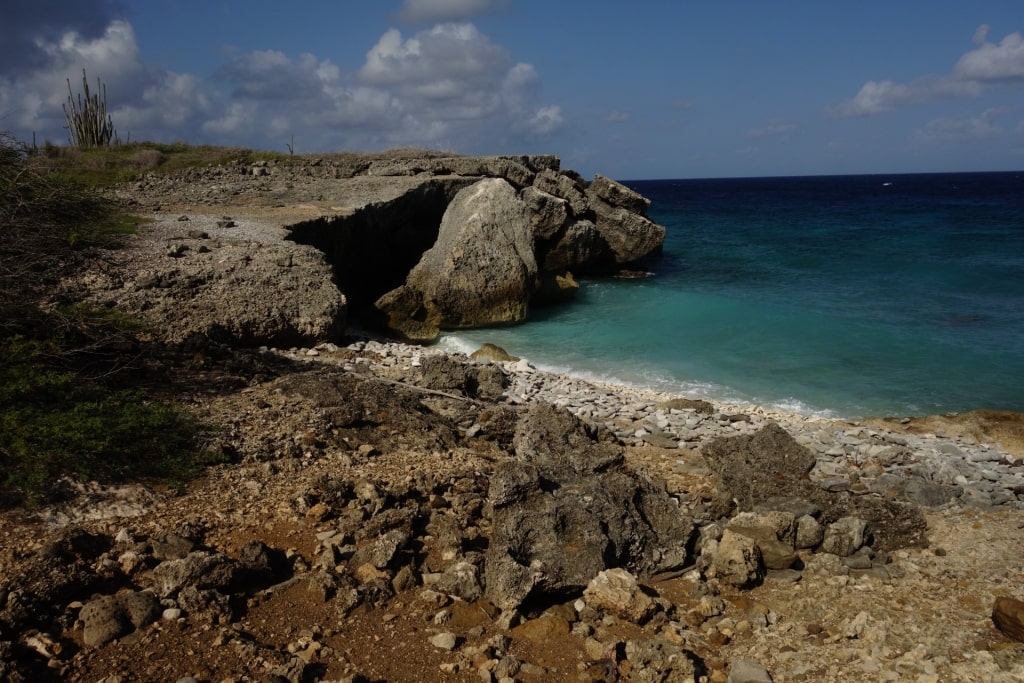
Playa Benge
One of several beaches in Washington Slagbaai National Park, Playa Benge lies on Bonaire’s northwest. You cross a small shell and rock-strewn beach to enter the water, which can be rough, with strong currents, so this is not a swimming spot for novices.
The lure of Playa Benge, though, is the rich underwater life. Snorkelers can look for snappers, jewelfish, groupers, and stingrays. Non-snorkeling companions sitting on the beach can commune with the many iguanas that bask in the sun here.
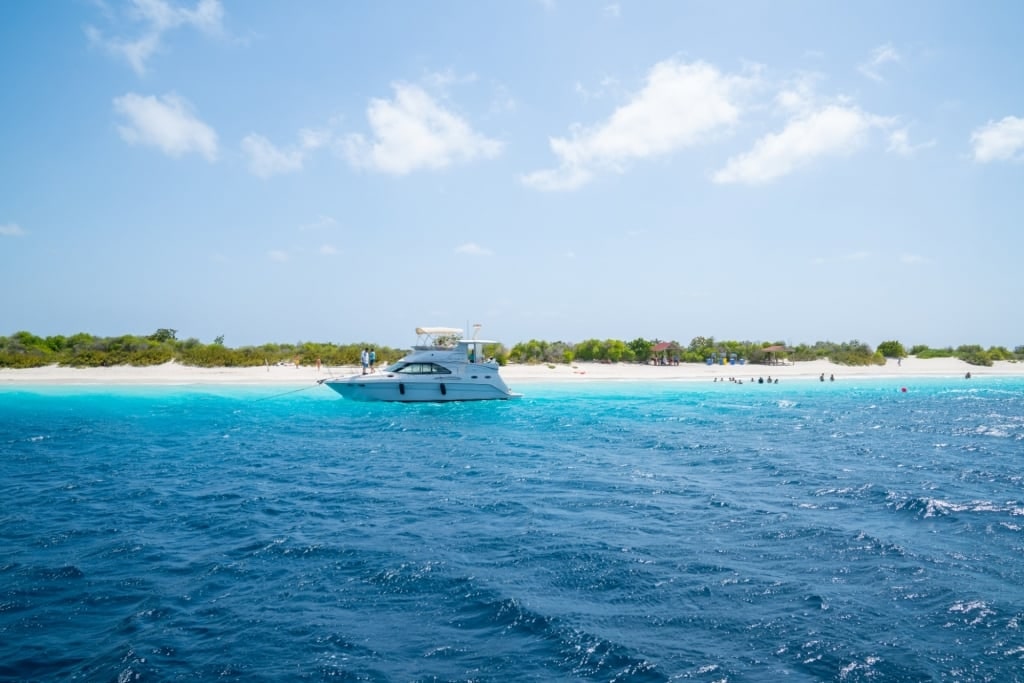
Bonaire
Excited to visit Bonaire and discover the beaches and underwater life? Browse Celebrity’s cruises to Bonaire and plan your dream vacation.


